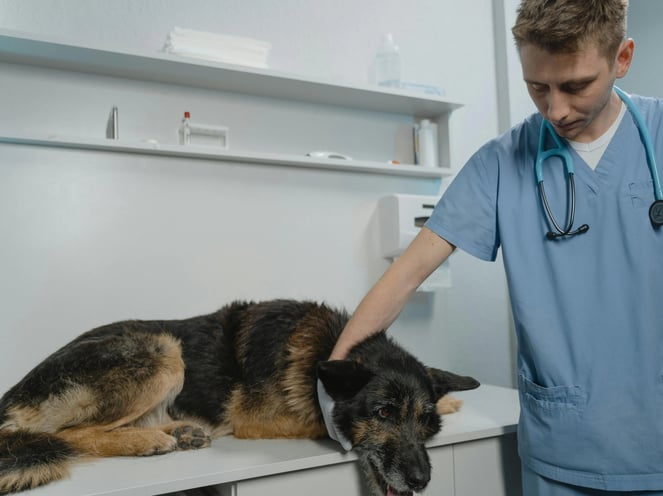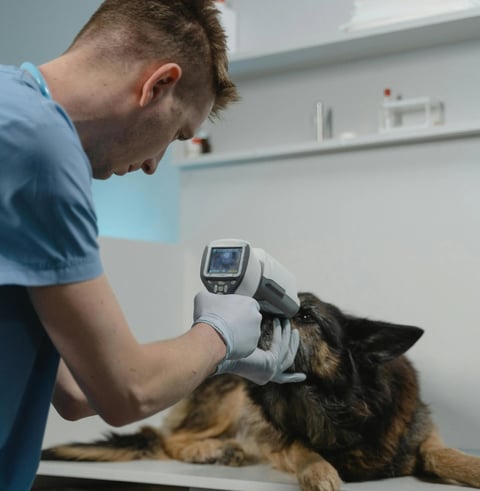Dog Poisoning: Symptoms and Treatment
This comprehensive guide on dog poisoning covers common toxic substances, symptoms, diagnosis, treatment, and prevention strategies. Learn how to recognize poisoning signs, act quickly in an emergency, and protect your pet from dangerous substances.
PET CARE AND HEALTH


Dogs are curious animals that explore their environment with their mouths, which increases their risk of ingesting toxic substances. Poisoning can occur due to household items, human medications, plants, foods, and environmental toxins. Understanding the signs, causes, and treatments of poisoning can save your pet's life.
This comprehensive guide explores the most common types of dog poisoning, symptoms, treatment options, and prevention strategies.
Common Types of Poisoning in Dogs
1. NSAID Poisoning (Non-Steroidal Anti-Inflammatory Drugs)
NSAIDs like ibuprofen, aspirin, and acetaminophen are dangerous for dogs due to their inability to metabolize these substances efficiently. Toxicity leads to gastrointestinal ulcers, kidney damage, and liver failure.
Symptoms:
Vomiting and diarrhea
Loss of appetite
Black or bloody stools
Abdominal pain
Seizures and tremors (in severe cases)
2. Chocolate and Methylxanthine Poisoning
Chocolate contains theobromine and caffeine, which affect the nervous and cardiovascular systems. Dark chocolate and baking chocolate have higher toxicity levels.
Symptoms:
Restlessness and hyperactivity
Vomiting and diarrhea
Increased heart rate
Seizures and muscle tremors
Coma or death in severe cases
3. Rodenticide (Coumarin) Poisoning
Rodenticides like warfarin and bromadiolone prevent blood clotting, leading to fatal hemorrhages in dogs.
Symptoms:
Pale gums
Internal bleeding (visible as bruising)
Weakness and lethargy
Coughing blood or bloody stools
Difficulty breathing
4. Organophosphate and Carbamate Poisoning (Pesticides & Parasiticides)
Commonly found in insecticides and flea control products, these chemicals inhibit cholinesterase, leading to excessive nerve stimulation.
Symptoms:
Excessive drooling
Muscle twitching and tremors
Seizures
Constricted pupils
Difficulty breathing
5. Food Poisoning (Spoiled Foodor Toxic Foods)
Dogs are prone to eating spoiled food, which can lead to bacterial poisoning (endotoxins) and food toxicity. Some toxic foods include grapes, onions, garlic, and xylitol (found in sugar-free products).
Symptoms:
Vomiting and diarrhea
Lethargy and weakness
Tremors and seizures (severe cases)
Diagnosing Poisoning in Dogs
Diagnosing poisoning requires a detailed history and clinical examination. Veterinarians may perform:
Blood tests to assess organ function.
Urinalysis to detect toxins.
X-rays or ultrasound if ingestion of foreign objects or toxins is suspected.
Treatment for Poisoning in Dogs
1. Stabilization
Oxygen therapy if breathing difficulties occur.
Intravenous fluids to prevent dehydration and support kidney function.
Anti-seizure medications (e.g., diazepam) for neurological symptoms.
2. Minimizing Toxin Absorption
Inducing Vomiting: Safe only if done within 2-3 hours after ingestion and under veterinary supervision.
Gastric Lavage: Performed if vomiting is ineffective or contraindicated.
Activated Charcoal: Administered to absorb toxins before they enter the bloodstream.
3. Eliminating Toxins
Diuretics: Aid kidney function to flush out toxins.
Liver Protectants: Administered in cases of NSAID or xylitol poisoning.
4. Administering an Antidote
N-acetylcysteine for acetaminophen poisoning.
Vitamin K1 for rodenticide poisoning.
Atropine for organophosphate poisoning.
What to Do If Your Dog Is Poisoned
Emergency Steps:
Remove the Source: Prevent further ingestion.
Call a Veterinarian Immediately: Provide details on what was ingested, when, and how much.
Avoid Home Remedies: Some substances, like hydrogen peroxide for vomiting, can worsen the situation.
Transport Safely: Bring any packaging of the toxic substance for identification.
Preventing Poisoning in Dogs
1. Secure Medications and Household Chemicals
Store all human and pet medications, cleaning products, and pesticides in locked cabinets.
2. Avoid Feeding Toxic Foods
Educate family members about harmful foods like chocolate, grapes, onions, and xylitol-containing products.
3. Monitor Outdoor Activities
Supervise walks to prevent scavenging from garbage, consuming toxic plants, or ingesting rodenticides.
4. Use Pet-Safe Pest Control
Opt for pet-friendly flea treatments and rodent control methods to reduce risks.
5. Train Your Dog
Teaching commands like "leave it" or "drop it" can prevent accidental ingestion of harmful substances.
Final Thoughts
Dog poisoning is a serious and life-threatening condition. Knowing the symptoms, acting quickly, and seeking professional veterinary care can significantly improve your dog's chances of recovery. Prevention is key—keeping dangerous substances out of reach and supervising your pet can make all the difference.
Additional Resources:




